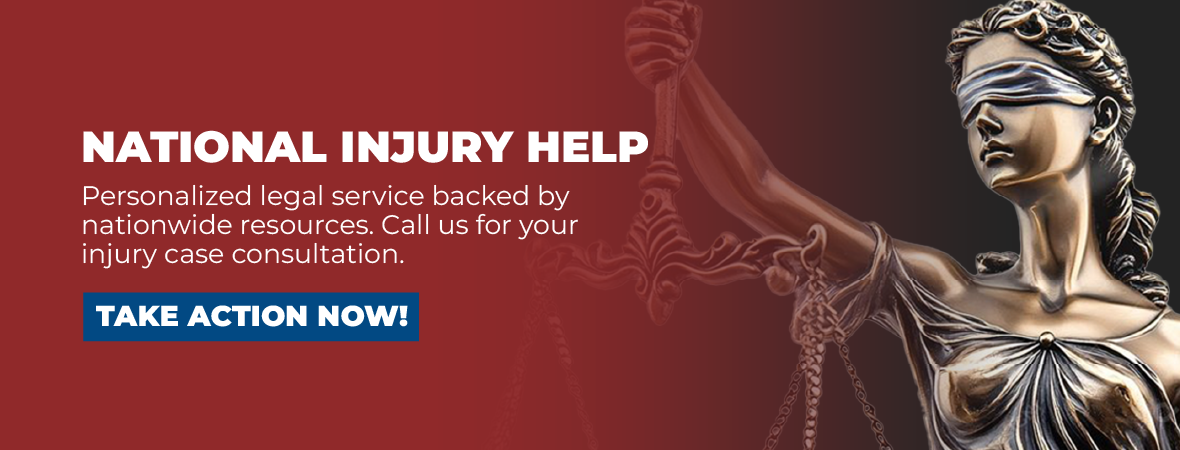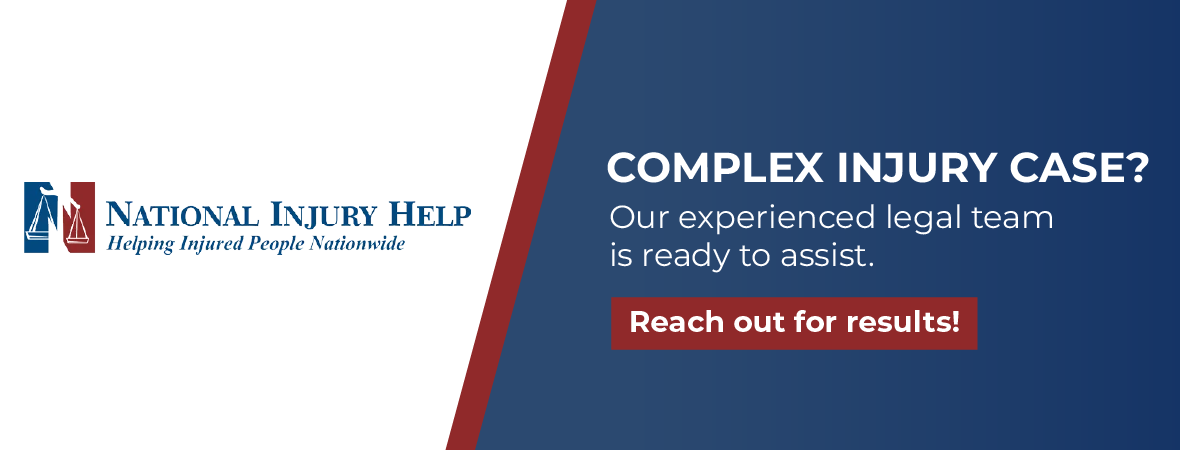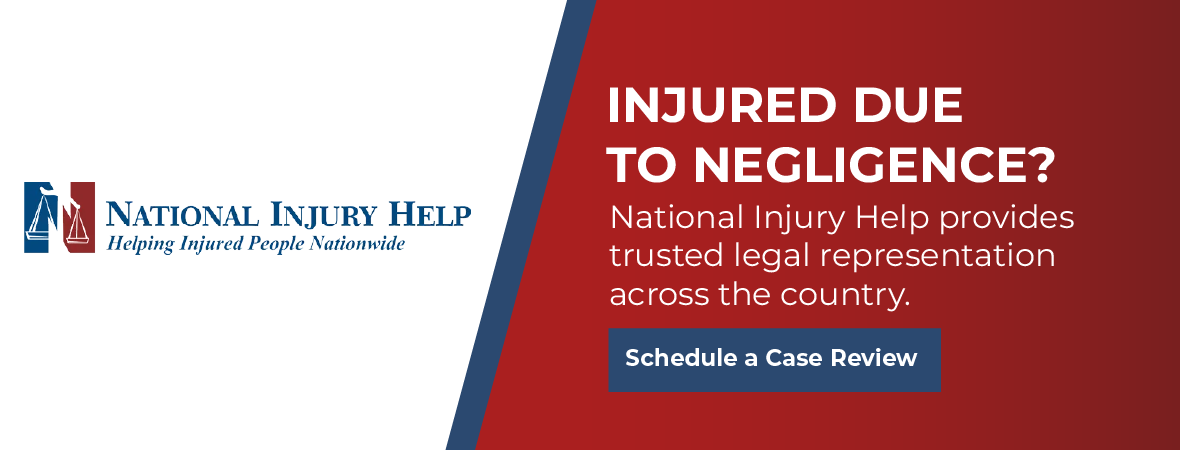- Home
- Accident & Injury
- Areas We Serve
- Arizona
- Arizona
- Avondale
- Avondale Personal Injury Lawyer
- Avondale Car Accident Lawyer
- Avondale Truck Accident Lawyer
- Avondale Bicycle Accident Lawyer
- Avondale Pedestrian Accident Lawyer
- Avondale Motorcycle Accident Lawyer
- Avondale Rideshare Accident Lawyer
- Avondale Wrongful Death Attorney
- Avondale Dog Bite Lawyer
- Avondale Brain Injury Attorney
- Buckeye
- Buckeye Personal Injury Lawyer
- Buckeye Car Accident Lawyer
- Buckeye Truck Accident Lawyer
- Buckeye Motorcycle Accident Lawyer
- Buckeye Bicycle Accident Lawyer
- Buckeye Pedestrian Accident Lawyer
- Buckeye Rideshare Accident Lawyer
- Buckeye Wrongful Death Attorney
- Buckeye Dog Bite Lawyer
- Buckeye Brain Injury Attorney
- Casa Grande
- Casa Grande Personal Injury Lawyer
- Casa Grande Car Accident Lawyer
- Casa Grande Truck Accident Lawyer
- Casa Grande Motorcycle Accident Lawyer
- Casa Grande Bicycle Accident Lawyer
- Casa Grande Pedestrian Accident Lawyer
- Casa Grande Rideshare Accident Lawyer
- Casa Grande Wrongful Death Attorney
- Casa Grande Brain Injury Attorney
- Casa Grande Dog Bite Lawyer
- Chandler
- Chandler Personal Injury Lawyer
- Chandler Car Accident Lawyer
- Chandler Truck Accident Lawyer
- Chandler Motorcycle Accident Lawyer
- Chandler Bicycle Accident Lawyer
- Chandler Rideshare Accident Lawyer
- Chandler Pedestrian Accident Lawyer
- Chandler Wrongful Death Attorney
- Chandler Dog Bite Lawyer
- Chandler Brain Injury Attorney
- Florence
- Florence Personal Injury Lawyer
- Florence Car Accident Lawyer
- Florence Truck Accident Lawyer
- Florence Motorcycle Accident Lawyer
- Florence Bicycle Accident Lawyer
- Florence Pedestrian Accident Lawyer
- Florence Rideshare Accident Lawyer
- Florence Dog Bite Accident Lawyer
- Florence Brain Injury Attorney
- Florence Wrongful Death Attorney
- Gilbert
- Gilbert Personal Injury Lawyer
- Gilbert Car Accident Lawyer
- Gilbert Truck Accident Lawyer
- Gilbert Motorcycle Accident Lawyer
- Gilbert Bicycle Accident Lawyer
- Gilbert Pedestrian Accident Lawyer
- Gilbert Rideshare Accident Lawyer
- Gilbert Wrongful Death Attorney
- Gilbert Dog Bite Lawyer
- Gilbert Brain Injury Attorney
- Glendale
- Glendale Personal Injury Lawyer
- Glendale Car Accident Lawyer
- Glendale Truck Accident Lawyer
- Glendale Motorcycle Accident Lawyer
- Glendale Bicycle Accident Lawyer
- Glendale Pedestrian Accident Lawyer
- Glendale Rideshare Accident Lawyer
- Glendale Wrongful Death Attorney
- Glendale Dog Bite Lawyer
- Glendale Brain Injury Attorney
- Goodyear
- Goodyear Personal Injury Lawyer
- Goodyear Car Accident Lawyer
- Goodyear Truck Accident Lawyer
- Goodyear Motorcycle Accident Lawyer
- Goodyear Bicycle Accident Lawyer
- Goodyear Rideshare Accident Lawyer
- Goodyear Pedestrian Accident Lawyer
- Goodyear Wrongful Death Attorney
- Goodyear Brain Injury Attorney
- Goodyear Dog Bite Lawyer
- Mesa
- Peoria
- Phoenix
- Phoenix Personal Injury Lawyer
- Phoenix Car Accident Lawyer
- Phoenix Truck Accident Lawyer
- Phoenix Motorcycle Accident Lawyer
- Phoenix Bicycle Accident Lawyer
- Phoenix Pedestrian Accident Lawyer
- Phoenix Rideshare Accident Lawyer
- Phoenix Wrongful Death Attorney
- Phoenix Dog Bite Lawyer
- Phoenix Brain Injury Attorney
- Scottsdale
- Scottsdale Personal Injury Lawyer
- Scottsdale Car Accident Lawyer
- Scottsdale Truck Accident Lawyer
- Scottsdale Motorcycle Accident Lawyer
- Scottsdale Bicycle Accident Lawyer
- Scottsdale Pedestrian Accident Lawyer
- Scottsdale Rideshare Accident Lawyer
- Scottsdale Wrongful Death Attorney
- Scottsdale Brain Injury Attorney
- Scottsdale Dog Bite Lawyer
- Surprise
- Surprise Personal Injury Lawyer
- Surprise Car Accident Lawyer
- Surprise Truck Accident Lawyer
- Surprise Motorcycle Accident Lawyer
- Surprise Bicycle Accident Lawyer
- Surprise Pedestrian Accident Lawyer
- Surprise Rideshare Accident Lawyer
- Surprise Wrongful Death Attorney
- Surprise Dog Bite Lawyer
- Surprise Brain Injury Attorney
- Tempe
- Tucson
- Yuma
- California
- Washington
- Yakima
- Vancouver
- Vancouver Personal Injury Lawyer
- Vancouver Car Accident Lawyer
- Vancouver Brain Injury Attorney
- Vancouver Truck Accident Lawyer
- Vancouver Motorcycle Accident Lawyer
- Vancouver Bicycle Accident Lawyer
- Vancouver Pedestrian Accident Lawyer
- Vancouver Rideshare Accident Lawyer
- Vancouver Wrongful Death Attorney
- Vancouver Dog Bite Lawyer
- Washington State
- Washington State Personal Injury
- Washington State Car Accident Lawyer
- Washington State Brain Injury Attorney
- Washington State Truck Accident Lawyer
- Washington State Motorcycle Accident Lawyer
- Washington State Bicycle Accident Lawyer
- Washington State Pedestrian Accident Lawyer
- Washington State Rideshare Accident Lawyer
- Washington State Wrongful Death Attorney
- Washington State Dog Bite Lawyer
- Spokane Valley
- Personal Injury in Spokane Valley
- Spokane Valley Car Accident Lawyer
- Spokane Valley Brain Injury Attorney
- Spokane Valley Truck Accident Claims
- Spokane Valley Motorcycle Accident Lawyer
- Spokane Valley Bicycle Accident Lawyer
- Spokane Valley Pedestrian Accident Lawyer
- Spokane Valley Rideshare Accident Lawyer
- Spokane Valley Wrongful Death Attorney
- Spokane Valley Dog Bite Lawyer
- Tacoma
- Spokane
- Spokane Personal Injury Lawyer
- Car Accident Lawyer in Spokane
- Spokane Brain Injury Attorney
- Spokane Truck Accident Lawyer
- Spokane Motorcycle Accident Lawyer
- Spokane Bicycle Accident Lawyer
- Spokane Rideshare Accident Lawyer
- Spokane Pedestrian Accident Lawyer
- Spokane Wrongful Death Attorney
- Spokane Dog Bite Lawyer
- Seattle
- Seattle Personal Injury Lawyer
- Seattle Car Accident Lawyer
- Seattle Brain Injury Attorney
- Seattle Truck Accident Lawyer
- Seattle Motorcycle Accident Lawyer
- Seattle Bicycle Accident Lawyer
- Seattle Pedestrian Accident Lawyer
- Seattle Rideshare Accident Lawyer
- Seattle Wrongful Death Attorney
- Seattle Dog Bite Lawyer
- Arizona
- Defective Drugs
- Defective Products
- Other Case Types
- Blog
- Contact Us
Hablamos Espanol - Call 24/7 1 (800) 214-1010
Benzene Lawsuit: Could Your Workplace Exposure Be to Blame For Your Health Condition?
A leukemia diagnosis can drastically alter your life, especially if it stems from workplace exposure to benzene, a known carcinogen. Many workers have unknowingly faced this risk, leading to severe health consequences. It’s vital to understand your rights and explore your legal options to seek justice and compensation. If you or a loved one has been diagnosed with leukemia due to benzene exposure, contact National Injury Help today. You deserve answers and the support to navigate this challenging journey.
The diagnosis of leukemia, a cancer of the blood and bone marrow, can send shockwaves through your life, leaving you with countless questions and overwhelming anxieties. But what if you discovered that your illness wasn’t a random occurrence, but rather the direct result of exposure to a known carcinogen like benzene in your workplace? This realization can add insult to injury, leaving you feeling betrayed by those who had a responsibility to protect your health and safety. If you or a loved one has been diagnosed with leukemia after being exposed to benzene, understanding your rights and exploring your legal options is paramount to securing the justice and compensation you deserve.
A Silent Threat to Workers’ Health and Safety
Benzene is a colorless, flammable liquid with a sweet odor that is widely used as a solvent and a chemical intermediate in various industries. While it is a valuable component in the production of plastics, resins, synthetic fibers, rubber lubricants, detergents, and pesticides, benzene is also a known human carcinogen, meaning it has been definitively linked to the development of cancer.
The U.S. Environmental Protection Agency (EPA) classifies benzene as a known human carcinogen and explicitly states that there is no safe level of exposure to this dangerous chemical.
The primary health risk associated with benzene exposure is damage to the bone marrow, the spongy tissue inside bones that is responsible for producing blood cells. Benzene can interfere with the normal production of blood cells, leading to a range of serious blood disorders, including:
- Acute Myeloid Leukemia (AML): This is the most common type of leukemia linked to benzene exposure. AML is a rapidly progressing cancer that affects the bone marrow and blood, leading to the production of abnormal white blood cells.
- Myelodysplastic Syndromes (MDS): These are a group of disorders in which the bone marrow does not produce enough healthy blood cells. MDS can sometimes progress to AML.
- Acute Lymphocytic Leukemia (ALL): This type of leukemia affects the lymphocytes, a type of white blood cell.
- Chronic Myelogenous Leukemia (CML): A slow-growing cancer of the blood and bone marrow characterized by an increase in the number of white blood cells.
- Non-Hodgkin’s Lymphoma (NHL): A cancer that begins in the lymphatic system, which is part of the immune system.
- Aplastic Anemia: This is a condition in which the bone marrow fails to produce enough blood cells, leading to anemia, infections, and bleeding problems.
Prolonged or high-level exposure to benzene can significantly increase the risk of developing these life-threatening blood disorders. Tragically, many workers who unknowingly handled or were exposed to benzene-containing products for years or even decades have developed these unnecessary illnesses.
How Much Do We Know About Benzene?
Scientific and epidemiological evidence, accumulated over decades, conclusively classifies benzene as a human carcinogen based on evidence gathered in both humans and animals. The key points in any scientific paper include:
- The Association to Acute Myeloid Leukemia (AML): Benzene exposure is strongly associated with increased risk of AML, a cancer of the blood and bone marrow. This is supported by numerous occupational studies showing elevated leukemia rates among workers exposed to benzene in industries like chemical manufacturing, oil refining, and shoemaking.
- Other Hematologic Cancers: Benzene exposure also shows links to other blood-related cancers, including acute myeloid leukemia, chronic lymphocytic leukemia (CLL), multiple myeloma, and non-Hodgkin lymphoma, although the evidence varies in strength. Some childhood leukemias have also been connected to benzene.
- Animal Studies: Laboratory studies in rats and mice exposed to benzene via inhalation or ingestion developed multiple tumor types, including leukemia and lymphomas, supporting human epidemiological data.
- Regulatory Evaluations: Since 1979, benzene has been classified by the IARC as carcinogenic to humans, with evaluations repeatedly confirming this status based on the growing body of data. Regulatory agencies, such as the EPA and WHO, recognize benzene’s carcinogenicity and its role as a potent leukemogen.
- No Safe Threshold: Benzene’s genotoxic and mutagenic properties suggest that there is no fully safe exposure level, although the risk increases with both exposure dose and duration.
In summary, benzene is conclusively linked to the development of leukemia and other blood-forming tissue cancers based on robust human epidemiological studies and animal bioassays. The evidence supports the implementation of strict occupational exposure limits and ongoing efforts to minimize benzene exposure globally.
High Risk of Benzene Exposure: Where Are Workers Most Vulnerable?
While benzene exposure can occur in various settings, certain industries and occupations carry a significantly higher risk due to the frequent use of benzene-containing products and the potential for inadequate safety measures. Workers in these industries are particularly vulnerable:
- Petrochemical Industry: This is one of the highest-risk industries, as benzene is a key component in the production of gasoline, plastics, synthetic rubber, and other petrochemical products. Workers in refineries, chemical plants, and related facilities are often exposed to high levels of benzene. Specific job roles at risk include:
- Refinery workers
- Chemical plant operators
- Maintenance technicians
- Tanker truck drivers
- Laboratory technicians
- Oil and Gas Industry: Similar to the petrochemical industry, the oil and gas industry also relies heavily on benzene-containing products. Workers involved in drilling, extraction, refining, and transportation of crude oil and natural gas face increased risks of benzene exposure.
- Manufacturing: Many manufacturing processes utilize benzene as a solvent or chemical intermediate. Workers in factories that produce rubber, plastics, resins, detergents, and other products are at risk.
- Printing Industry: Benzene is used as a solvent in some printing inks and as a component in cleaning agents. Press operators, ink mixers, and other employees in the printing industry may be exposed to benzene.
- Shoe Manufacturing: Benzene was historically used as a solvent in the production of shoes. While its use has declined in recent years, some workers may still be exposed, particularly in older factories.
- Rubber Industry: Benzene is used in the production of synthetic rubber and the manufacturing of rubber products, such as tires and hoses.
- Laboratories: Some laboratory workers may be exposed to benzene while conducting research or analyzing chemical samples.
- Transportation Industry: Truck drivers who transport benzene-containing products, as well as mechanics and other transportation workers who work with gasoline and other fuels, may face risks of benzene exposure.
- Firefighters: Firefighters may be exposed to benzene and other harmful chemicals when fighting fires, especially those involving burning plastics or petroleum products.
- Mechanics: Mechanics working on automobiles and other machinery can be exposed to gasoline and cleaning agents.
It is important to remember that even if your specific job title isn’t listed above, you may still be at risk if you work in an industry that uses benzene or benzene-containing products. Employers have a legal and ethical responsibility to provide a safe working environment and to minimize or eliminate worker exposure to hazardous chemicals.
Recognizing the Warning Signs of Benzene-Induced Leukemia
Early diagnosis is crucial for effective treatment of leukemia and other blood disorders. It is essential to be aware of the potential symptoms of benzene-induced leukemia so that you can seek medical attention promptly if you experience any concerning signs. Common symptoms include:
- Persistent Fatigue: Feeling unusually tired or weak, even after getting adequate rest, is a common early symptom.
- Frequent Infections: A weakened immune system, resulting from reduced white blood cell production, can lead to frequent or recurring infections.
- Easy Bruising or Bleeding: Benzene can interfere with the production of platelets, which are essential for blood clotting. This can lead to easy bruising, nosebleeds, gum bleeding, and heavy menstrual periods.
- Tiny Red Spots Under the Skin (Petechiae): These small, red spots are caused by bleeding under the skin and are another sign of low platelet count.
- Bone Pain or Tenderness: Leukemia can cause bone pain or tenderness, particularly in the ribs, sternum, and long bones of the arms and legs.
- Swollen Lymph Nodes: Swollen lymph nodes, particularly in the neck, armpits, or groin, can be a sign of leukemia or other blood disorders.
- Unexplained Weight Loss: Losing weight without trying can be a symptom of cancer, including leukemia.
- Night Sweats: Drenching night sweats that soak your bedclothes can be a sign of leukemia or other blood disorders.
- Shortness of Breath: Anemia, a common complication of leukemia, can cause shortness of breath, even with minimal exertion.
- Frequent Headaches: Some types of leukemia can cause headaches due to pressure on the brain.
It is important to emphasize that these symptoms can also be caused by other conditions, so it is essential to consult with a doctor for a proper diagnosis if you experience any of these signs. If you have a history of benzene exposure, be sure to inform your doctor about your exposure history, as this information is crucial for accurate diagnosis and treatment.
The Legal Path Forward: Pursuing Justice and Compensation for Benzene Exposure Victims
If you or a loved one has been diagnosed with leukemia or another blood disorder after being exposed to benzene in the workplace or other environments, you have legal rights and may be entitled to compensation. Seeking legal recourse can help you recover damages for:
Medical Expenses: Covering the costs of diagnosis, treatment, and ongoing care, including chemotherapy, radiation therapy, bone marrow transplants, medications, and supportive care.
Lost Wages: Compensation for lost income due to inability to work during treatment and recovery.
Pain and Suffering: Addressing the physical pain, emotional distress, mental anguish, and diminished quality of life caused by the illness.
Future Medical Care: Providing for the costs of future medical treatments and ongoing monitoring to manage the long-term effects of leukemia.
Punitive Damages: In cases of gross negligence or intentional misconduct, punitive damages may be awarded to punish the responsible party and deter similar conduct in the future.
Wrongful Death: If a loved one has died as a result of benzene-induced leukemia, a wrongful death lawsuit can provide compensation to the surviving family members for their losses, including funeral expenses, loss of income, and loss of companionship.
Notable Benzene Exposure Lawsuit Verdicts
While every case is unique, and the outcome of any particular lawsuit cannot be guaranteed, several notable benzene exposure lawsuit verdicts have sent a powerful message to negligent companies.
One example can be found in Philadelphia, Pennsylvania, where a jury awarded $725.5 million to a former mechanic who developed acute myeloid leukemia (AML) due to benzene exposure while working at a Mobil service station. This landmark verdict highlighted the devastating consequences of benzene exposure and underscored the importance of holding companies accountable for failing to protect their workers. This case is an example of when victims win.
It is precisely verdicts like these that demonstrate that it is possible to obtain justice and
significant compensation in benzene exposure lawsuits. However, it is essential to remember that these cases are complex and require a skilled legal team to navigate the legal process effectively.
What Do I Need To Make My Benzene Exposure Case?
To successfully pursue a benzene exposure lawsuit, you must be able to demonstrate a causal link between your benzene exposure and your leukemia diagnosis. This can be achieved through various methods, ideally more than one of them. These include medical records, where a detailed history documenting your diagnosis, treatment, and prognosis can be found, exposure history (documentation of your past benzene exposure, including employment records, job descriptions, and testimony from coworkers or supervisors); expert testimony from medical experts who can explain the link between benzene exposure and leukemia and provide an opinion that your diagnosis was caused by benzene exposure, and finally: scientific evidence. Research studies and scientific literature consistently support the link between benzene exposure and an increased risk of leukemia.
Don’t worry. This is not something you have to achieve on your own. Given the complexities involved in these types of cases, it is crucial (and relieving) to work with an experienced attorney who understands the intricacies of toxic tort litigation and has a proven track record of success in handling benzene exposure claims.
What to Expect When Filing a Miner Wage Lawsuit
Filing a lawsuit can seem overwhelming, but understanding the basic steps involved can make the process less daunting:
- Consult with an Experienced Employment Law Attorney: The first step is to consult with an attorney who has a proven track record of success in handling benzene exposure cases and representing victims involved in these disputes. The attorney will review your case, assess its strengths and weaknesses, and advise you on the best course of action.
- Gather Evidence and Document Your Claim: Working closely with your attorney, you will gather all available evidence to support your claim, including medical records, research, company policies, and witness statements.
- File a Complaint: Your attorney will draft and file a complaint with the appropriate court, outlining the facts of your case and the legal basis for your claim.
- Discovery Process: After the complaint is filed, the case enters the discovery phase, during which both sides exchange information and evidence. This may involve interrogatories (written questions), document requests, and depositions (sworn testimony).
- Negotiation and Settlement: In many cases, the parties will attempt to negotiate a settlement to resolve the case without going to trial. Your attorney will represent your best interests during these negotiations.
Trial: If a settlement cannot be reached, the case will proceed to trial, where a judge or jury will hear the evidence and render a verdict.
Frequently Asked Questions (FAQs) About Benzene Exposure and Leukemia Claims
We understand that you likely have many questions about benzene exposure, leukemia, and your legal options. This is a complex and sensitive topic, and it’s natural to seek clarity and support during such challenging times. Below, we have compiled a list of some of the most frequently asked questions we receive from individuals and families affected by these illnesses, along with informative answers to help guide you through this difficult situation. At National Injury Help, we aim to provide you with the information you need to make informed decisions regarding your health and legal rights.
What is the link between benzene exposure and leukemia?
Benzene is a known carcinogen that can cause damage to bone marrow, leading to blood disorders like acute myeloid leukemia (AML). Prolonged exposure, especially in occupational settings, increases the risk of developing this condition.
Who is at risk of benzene exposure?
Workers in industries such as petrochemicals, manufacturing, painting, and mechanics are at higher risk due to the use of benzene-containing products.
What are the common symptoms of benzene-induced leukemia?
Symptoms include fatigue, frequent infections, easy bruising or bleeding, weight loss, and bone pain. Early diagnosis is crucial for effective treatment.
Can I file a lawsuit if I was exposed to benzene at work?
Yes, if you can demonstrate that your leukemia diagnosis is linked to occupational benzene exposure, you may be eligible for compensation.
What compensation can I seek in a benzene exposure lawsuit?
Compensation may cover medical expenses, lost wages, pain and suffering, and punitive damages in cases of gross negligence.
How long do I have to file a benzene exposure claim?
Statutes of limitations vary by state, but it’s advisable to consult an attorney promptly after diagnosis to ensure timely filing.
Are there any notable benzene exposure lawsuit verdicts?
Yes, for instance, a Pennsylvania jury awarded $725.5 million to a former mechanic who developed AML due to benzene exposure while working at a Mobil service station.
What industries commonly involve benzene exposure?
Industries include oil and gas, manufacturing, painting, printing, and chemical production, among others.
How can I prove my leukemia is linked to benzene exposure?
Medical records, employment history, and expert testimony can help establish a connection between your diagnosis and exposure to benzene.
What should I do if I suspect my leukemia is due to benzene exposure?
Seek medical attention, document your exposure history, and consult with an attorney experienced in toxic exposure cases to explore your legal options.
Holding Negligent Companies Accountable
Holding negligent companies accountable is central to National Injury Help’s commitment to our clients and the broader pursuit of justice. We recognize that corporations have immense power and resources, making it challenging for individuals harmed by their negligence to seek justice. Our firm is founded on the principle that no one should profit from causing harm, and we vigorously explore all legal options to ensure that responsible parties are held accountable.
We conduct meticulous investigations, consult with experts, negotiate strategically, and engage in relentless litigation. We are fully prepared to go the distance to secure the compensation and justice our clients deserve. Our fight extends beyond individual claims; we also aim to deter future wrongdoing and promote a safer, more responsible corporate environment.
Justice and Support: National Injury Help is Here for You
A leukemia diagnosis is a life-changing event, and the realization that your illness may be linked to workplace benzene exposure can add an unbearable weight to your burden. You deserve answers, accountability, and the financial resources you need to cope with the challenges ahead.
At National Injury Help, we are deeply committed to advocating for individuals and families affected by toxic exposures like benzene. Our experienced legal team understands the complexities of these cases and is prepared to fight tirelessly to secure the justice and compensation you deserve. We offer:
- Compassionate and Personalized Legal Support: We treat every client with the empathy, respect, and understanding they deserve during this difficult time.
- Thorough Case Investigation: We will meticulously investigate your case, gathering all necessary evidence to establish the link between your benzene exposure and your leukemia diagnosis.
- Experienced Legal Representation: Our skilled attorneys have a proven track record of success in handling complex toxic tort cases and will advocate fiercely for your rights.
- Access to Medical Experts: We will consult with leading medical experts to provide compelling testimony in support of your claim.
- Contingency Fee Basis: You will not pay any attorney’s fees unless we successfully recover compensation for you.
Don’t let the negligent actions of others define your future. Contact National Injury Help today for a free, confidential, and no-obligation consultation. Let us help you navigate the legal process, hold the responsible parties accountable, and reclaim your life. You don’t have to face this battle alone. We are here to stand by your side, provide you with the support and guidance you need, and fight tirelessly to secure the compensation you deserve. Reach out to National Injury Help today— your path to justice and recovery starts now.









